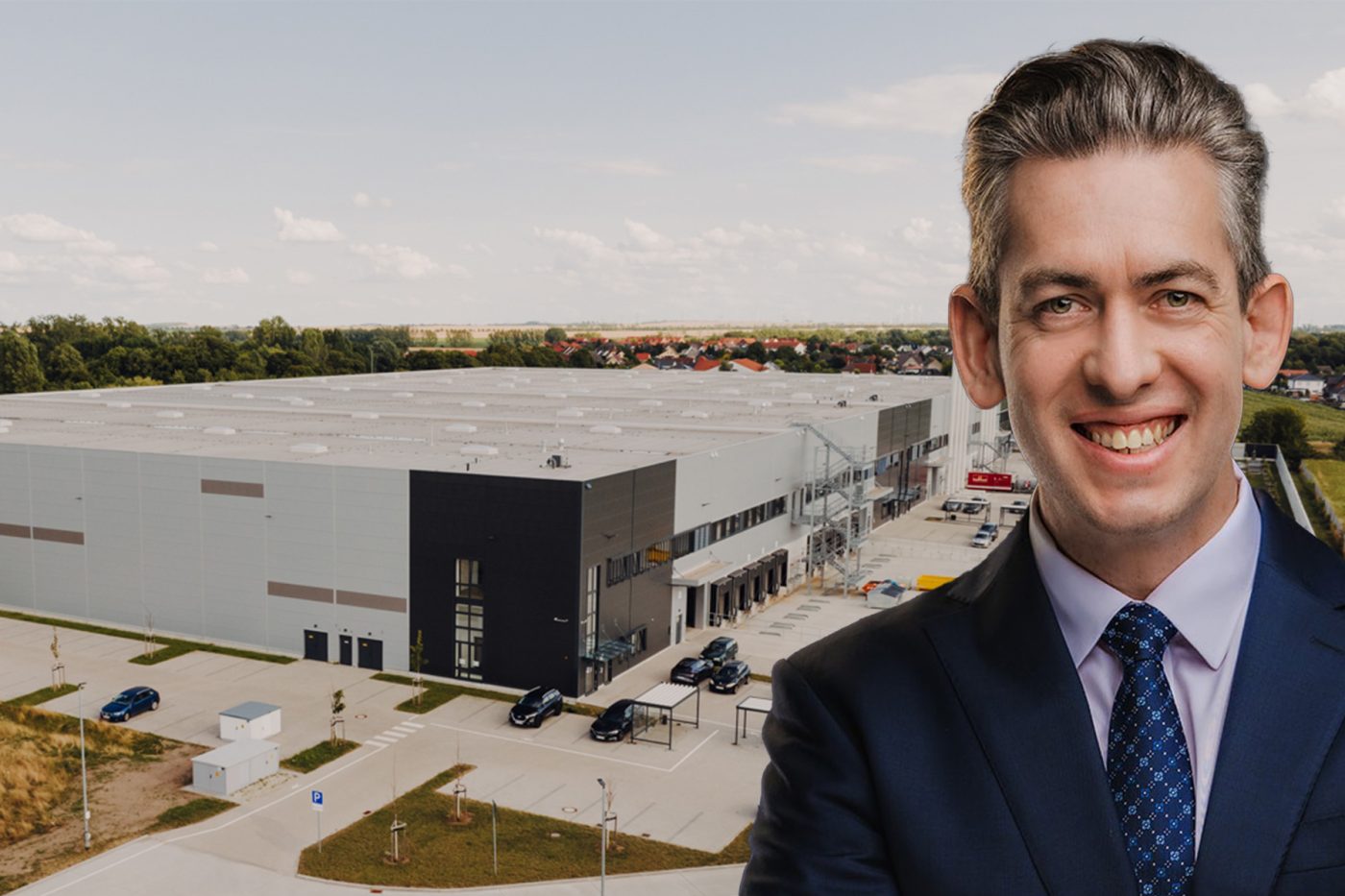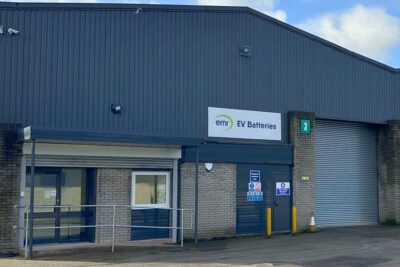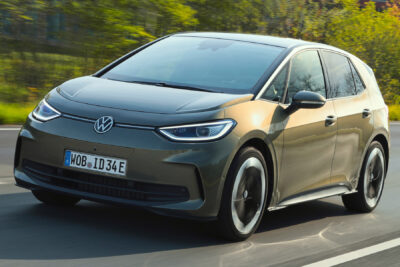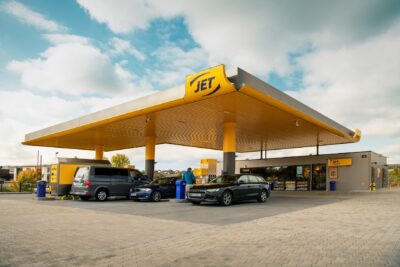Interview: Li-Cycle founder Tim Johnston on battery recycling in Europe
Lithium-ion batteries and production waste of all kinds are crushed and prepared for hydrometallurgical recycling in the Magdeburg plant, which will become the largest of its kind for Li-Cycle by the end of the year. Strictly speaking, the plant has been in trial operation since the beginning of August and has now been officially commissioned. Li-Cycle’s top managers travelled to Germany for the event.
Each processing line in a Li-Cycle spoke plant is designed for a processing capacity of 10,000 tonnes of material per year, i.e., sorted old batteries or production scrap from cell manufacturing. A second production line will go into operation in Magdeburg this year. With the planned 10,000 tonnes of additional capacity, the plant will probably have a total capacity of 30,000 tonnes per year.
In Magdeburg, however, the company does not process battery raw materials, but an essential preliminary stage takes place there. In the so-called ‘spokes,’ used batteries and production waste are processed into the so-called black mass, a mixture of the active materials of the batteries – other materials are sorted out in the process and reused. From the black mass, the raw materials are extracted in the so-called ‘hubs’ using hydrometallurgical processes, which can then be turned into new batteries again.
Such a hub is planned for Sardinia in cooperation with Glencore. In the electrive interview, Tim Johnston, founder and executive chairman of Li-Cycle, explains the company’s processes and technology. And he tells us why a hub facility on a Mediterranean island makes sense for European battery recycling.
Li-Cycle is opening its first European facility in Magdeburg, the Germany Spoke. Why did you choose Germany, and especially Magdeburg, as your largest Spoke yet?
We chose Germany because it is the heart of European automotive growth. What we see today is that Germany is not only a leader when it comes to producing electric vehicles in Europe, but has also become the leader for production of Lithium-ion battery cells for those electric vehicles. When we look at where to position our Spokes globally, we’re focusing on where our customers are based. The Spoke and Hub processes are designed so that our pre-processing Spokes are located close to what we call demand centers, so where cell manufacturing or automotive manufacturing is taking place. We did an extensive review across Germany to identify the most central location relative to the existing and growing base for manufacturing as well as having good logistics and infrastructure to support the operations. That’s ultimately how we opted for in Magdeburg.
Is the Germany Spoke any different from your other Spokes? Do you have the additional space for more production lines, or use a different technology there?
It’s exactly the same process that we utilize in North America. We’re utilizing what we call our ‘Generation 3’ Spoke technology, which is the same technology and process we’ve implemented in Arizona and Alabama in the United States. In terms of footprint, it is approximately the same size as the Arizona facility. We’re just accelerating the implementation of a second main processing line, which we’re expecting to come online by the end of this year.
Let’s go through the process in the Magdeburg Spoke. All batteries and production scraps are brought there by truck. What happens in the facility?
We receive the material. The first thing that we do is a safety inspection. Upon receiving the material, we want to make sure that it’s safe to store in the warehouse part of the facility. Then we will log the material into our inventory management system and warehouse it ahead of processing. We will then pull material from the warehouse on a first-in-first-out basis predominantly, and take it into the processing line where we’re utilizing our submerged shredding technology. All the different types of Lithium-ion batteries get processed in essentially the same way: we feed them into the process. They get processed and shredded up. We liberate the anode and cathode materials from within the Lithium-ion batteries, which we call black mass. We remove all plastic using density separation. We later on use size separation to do physical separation of the black mass components and the other metallic content – components like copper, aluminum, and steel – and then collect them as a secondary by-product.
Does it make any difference for you if it is an end-of-life battery, let’s say, NMC 532 or an up-to-date battery NMC 811 production scrap?
No, it makes no difference. It’s effectively a mechanical process. We’re agnostic to both form factors and chemistry in the process, which is one of its main strengths.
Where do you see the potential to optimize the process in your Spokes?
As we continue to operate the facilities, we’re getting better all the time, especially since they are all nearly identical and lessons learned in one can be shared and applied across all. We’ve been operating our Spoke facilities now for four years. One of the areas where we see continued growth is in the processing of the early forms of manufacturing scrap, or what we call dry materials. It is a simpler process to upgrade and separate out the cathode and anode materials from this process. That’s an area we’ve put a lot of work into over the last 12 months to improve and we will continue to make improvements there. Otherwise, the technology is relatively mature. Our focus is always on trying to push more productivity through the same assets, continuing to push throughput, and improve mechanical availability. These are normal operational improvement activities that you would typically see in any processing plan.
Do you want to make it cheaper, or do you want to make it faster?
The two are connected. The faster we can process the material, the more material we can run, the lower the fixed cost of operating the asset. We’re always pushing for efficiency gains, which are mostly driven by productivity gains.
So, a unified type of battery won’t make life easier for you? In a few years’ time, you will get lots of unified cells from the Volkswagen Group, or lots of old Tesla 2170 batteries.
Given the flexibility of our process I mentioned earlier, that doesn’t make any difference to us.
The main focus is the black mass because the most valuable materials are in there. Which role do by-products like copper and aluminum play in your development?
Today, the black mass is the most valuable part of the Lithium-ion battery from a recycling perspective because it contains critical materials such as nickel, cobalt and lithium, which globally are in relatively short supply. There are existing and very mature recycling industries for by-products like copper, aluminum and steel, so we want to make sure that we recover these materials and pass them on to these industries to process them in a responsible way. Our expertise is taking that black mass material and then refining it to recover nickel, cobalt, and lithium.
Is it correct that the production process in the Spoke itself is not very energy intensive because it’s just mechanical?
Yes, exactly. We don’t use any thermal processing of the Lithium-ion batteries at all. It’s all mechanical and the power intensity is very low. It is also a submerged process and therefore very safe.
Now, we have our black mass from the Spoke. The recycling itself takes place in your Hubs. Your European Hub will be built in Sardinia, an island in the Mediterranean Sea. Why on an island? Doesn’t it make more sense in Central Europe from a logistics point of view?
Yes, but logistics is only one consideration. The other major consideration is access to infrastructure for reagents and utilities. The benefit of utilizing the Portovesme site in Sardinia is that this is an existing hydrometallurgical refinery that has all those infrastructure and utilities components already in place. In addition, a significant part of the plant can be retooled and repurposed for processing black mass. Ultimately, what it leads to is a more efficient, lower capital-intense and faster path to being able to recycle black mass in Europe. I like to think of it as effectively recycling an asset: we’re recycling a plant in order to recycle black mass.
How does the material get to Portovesme from Magdeburg, France, and Norway? By train or by truck?
We’re still working through the details in terms of optimizing with our logistics partners: how to get the material there in the most efficient and environmentally friendly way. We won’t start processing in Portovesme until next year.
Do different battery types make any difference in the process there?
Again, it’s exactly the same process. It’s mechanical in nature. The chemical part is very minor; it’s associated with treating the electrolyte. There’s really no difference in the chemistry of Lithium-ion batteries when it comes to processing at Hub level.
In the second phase of the Portovesme Hub, you are planning to recycle up to 70,000 tonnes per year. You have to scale up the process quickly there.
The great part of what we’re doing is that it is all scalable. At the end of the day, we size the assets and the production capacity based on the market demand that we have through our existing network. It is twice as big as the facility that we’re building in Rochester, New York today. Rochester, will be one of the largest processing sites in the world for black mass once it’s completed. Portovesme will be twice as big as that, which will make it one of the largest in the world. We believe at the time it would be the largest in Europe for processing black mass.
We all know that we need battery recycling. The most important thing is the timing. How can you sustain all your expensive facilities when it may take two or three more years until the really big volumes are coming in?
These assets take a long time to build and put into production. Here in Rochester, we expect tostart commissioning by the end of this year, but this asset has essentially been in development for four years already. When you think about the timeline for Portovesme, we’re talking about an estimate for phase two which will be late 2026, early 2027 for commissioning. When you look at the forecast for volumes of recycling need – not just within Europe – then we are likely to be well and truly outstripped by market demand even in 2026, 2027 with such a facility.
That’s demand for recycled materials. What do you recycle until then?
No. That’s the demand for processing of black mass. The Rochester and the Portovesme assets are still only about 10 to 15 percent of the projected total addressable market for refining capacity for black mass. The world needs more refining capacity.
You already made deals with big companies for partnerships to secure old batteries and production scraps. Did it help you in the negotiations that you already have Spoke facilities up and running?
Yes it did. We already have over 200 battery supply customers that provide us with material. We also work with many of the automotive and cell manufacturers. We’re working with them and we’re looking at their growth plans. You just have to look at the growth in Gigafactory construction over the next few years to realize that there’s going to be a significant amount of manufacturing scrap, in particular over the next few years, that will need to be recycled.
All the production process is running and scalable, so your main focus should be getting the materials to your Spokes.
It always is. It really starts with our customers and ends with our customers. We’re a service organization providing closed-loop solutions for our customers.
Mr Johnston, thank you very much for the interview!
The interview was conducted by Sebastian Schaal, Germany






2 Comments